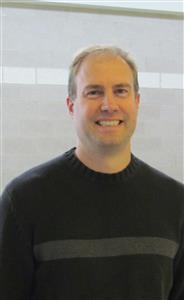
Faculty Developer and Host: Dr. Brent Cunningham, Engineering

Spring semester availability
Feb 12- March 6 and March 27-April 10, not available April 5th
Mondays and Wednesdays 9-11
Description
How might we stimulate creativity within younger minds? Rube Goldberg machines are conceptions intentionally designed to perform a task by setting off a chain reaction of events. Each action triggers the initiation of another, usually unrelated, action. These types of machines are usually impractical in reality, however, can be a way to enlighten potential future designers about scientific concepts, problem solving, and critical thinking. Emphasis is placed on teaching a design methodology where students are expected to analyze provided resources, generate and illustrate a well thought-out design on paper, and physically construct a mechanism to perform a task while meeting certain design constraints.
Overview of What Your Students Will Be Doing
-
Introduction to engineering, design, and related scientific principles
-
Generation of ideas by asking questions such as what resources are available, what interactions are possible, where might failure occur, and what are alternative ideas?
-
Design machine by illustration
-
Creation including testing and reiteration
-
Showcase in which students discuss their process, demonstrate their machine, and receive critique
Differentiation
The challenge will be similar, however, high school students may have more expectations, such as:
- Perform more interactions
- An additional constraint to meet
- A more difficult task to perform
- Incorporate a safe chemical reaction
Helpful Background Knowledge
A general understanding of mechanical (possibly chemical at higher levels) interactions. Usually, this requires a natural understanding from daily observations, for example: The higher an object falls, the faster its speed near the ground and the more momentum it has. The terms Newton’s Laws and momentum should at least be familiar. Students are not expected to recite the equations/principles from memory. These will appear in the Introduction step at the beginning as a way to connect scientific principles to engineering design and their use in problem solving. Although we will not expect nor require any mathematical calculations, they are nevertheless principles and equations that govern most interactions that are likely to take place.
Transferable STEM Skills Practiced
- Creativity – Invent a process using resources available that accomplishes a provided task.
- Systems thinking – Understand how different mechanisms connect together.
- Engineering design thinking – Apply a methodology that efficiently extracts ideas and results in a solution.
- Communication – Articulate ideas verbally and with drawings. Listen to others. Compromise.
- Teamwork – Encourage and support other’s ideas. Work together to solve a problem.
Cross-Disciplinary Connections
Chemistry – Energy from a chemical reaction converted to mechanical energy.
Physics – Understanding how forces, momentum, and energy play a role in the design of mechanical machines.
The experience in this STEM related activity folds the disciplines above into the mold of engineering design. In addition to applying scientific concepts, there is an extensive focus on idea generation, creativity, design, redesign, and testing.
Connections to Dr. Cunningham's Teaching and Research Interests
The courses Dr. Cunningham teaches have a particular connection of chemistry principles to engineering in the courses Fluid Mechanics and Thermodynamics, while a connection of both chemistry and physics in the course Integrated Science. What most likely will be connected here with this activity is to provide each student with a spark toward enjoyment and excitement for creativity; that engineering and science doesn't have to be intimidating; and that everything around us has some connection to science.
Examples of Connections to Solving Real-World Challenges
The improvement of the telephone since its inception by Alexander Graham Bell is a great example. We are currently at the point where so many forms of communication and business are done through the phone. The Apple iPhone in particular is an example of a solution to a design idea that someone had. After developing prototypes that weren't feasible in some way at the beginning, they continued to iterate towards a design that functioned in the areas they desired: small, lightweight, camera, touchscreen, battery life, etc. They continued to improve on their product, not just with their own ideas but with the incorporation of better products from suppliers: better cameras, faster and smaller processors for example.
Related Careers
Design engineers: The design process is intended to get the best out of engineers. It extracts as many ideas out of the minds of engineers so that, while working together, they may fine tune ideas into the best possible solution. It provides an understanding that failure is okay, and many times necessary, in order to determine a more feasible path to success. Design Engineer description from Indeed.com
